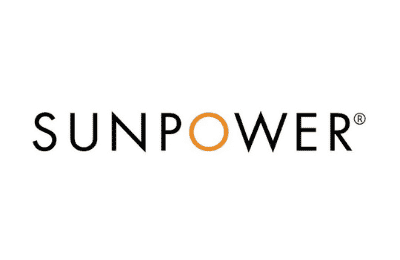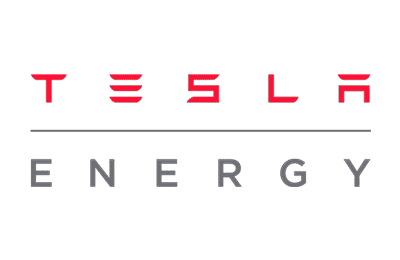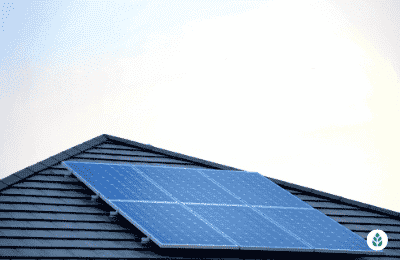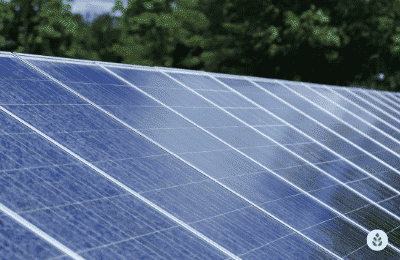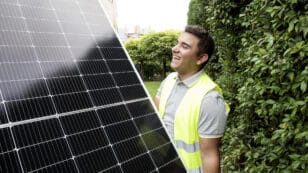
Top 7 Best Solar Companies in Rhode Island (2024 Reviews)
In this guide to Rhode Islands’ best solar companies, we’ll answer your questions including:
- What are our top picks for solar companies in Rhode Island?
- What should you look for when choosing a Rhode Island solar provider?
- How do you find cost savings on Rhode Island solar installation?
Each product and or company featured here has been independently selected by the writer. You can learn more about our review methodology here. If you make a purchase using the links included, we may earn commission.
With its above-average electricity rates and its abundance of beneficial solar incentives, Rhode Island is one of the best places in the country to convert to solar energy. The average solar array in the state pays for itself in just eight years and saves an average of $46,071 on energy bills thereafter in net savings. Going solar is an easy decision, but choosing an installer to tackle your solar project is much more challenging.
In this guide, we’ll review the best solar companies in Rhode Island. We’ll explain what we like and dislike about each and discuss why we think these providers are the most likely to deliver energy savings and great service in your area.
What Are the Best Solar Companies in Rhode Island?
We’ve spent lots of time and effort researching different solar installers in Rhode Island to make sure we’re bringing you the most accurate and beneficial information possible. Below are what we believe are the best solar installers in Rhode Island based on our research:
- SunPower: Best National Provider
- Tesla: Best Technology
- Green Power Energy: Best Regional Provider
- Summit Energy: Best Customer Service
- Trinity Solar: Most Experienced Regional Provider
- Sol Power: Best Local Installer
- NuWatt Energy: Best for System Customization
Compare Rhode Island’s Top-Rated Solar Providers
In short, we suggest Rhode Islanders check out SunPower and Green Power Energy for their solar needs. Both providers include above-average customer service and high-quality systems that are sure to save you money over time. We’ll include a side-by-side comparison of these installers and our other top picks in the table below to help you decide which might be best for you.
| Solar Providers | Superlative | Our Score | Avg Cost | Warranty | Financing Options | Get Quote |
| SunPower | Best National Provider | 5/5 | $$$$ | Minimum of 25 years for equipment, workmanship and production | Cash, solar loan, solar lease, PPA | Get Quote |
| Tesla | Best Technology | 4.5/5 | $$ | 25 years for equipment and performance; 10 years for workmanship | Cash, solar loan, solar lease, PPA | Get Quote |
| Green Power Energy | Best Regional Provider | 4.5/5 | $$$ | 25 years for equipment, performance and workmanship | Cash, solar loan, solar lease | Get Quote |
| Summit Energy | Best Customer Service | 4.5/5 | $$$ | 30 years for equipment, performance and workmanship | Cash, solar loan, PPA | Get Quote |
| Trinity Solar | Most Experienced Regional Provider | 4/5 | $$$ | 25 years for equipment and production; 5 years for workmanship | Cash, solar loan, solar lease, PPA | Get Quote |
| Sol Power | Best Local Installer | 4/5 | $$$ | 25 years for equipment and performance; 10 years for workmanship | Cash, solar loan | Get Quote |
| NuWatt Energy | Best for System Customization | 4/5 | $$$ | 25 years for equipment, performance and workmanship | Cash, solar loan, PPA | Get Quote |

SunPower
Pros
- Most efficient panels on the market
- National coverage
- Cradle to Cradle sustainability certification
- Great warranty coverage
Cons
- Expensive
- Customer service varies by local dealer

Tesla Energy
Pros
- Price-match guarantee
- Sleek, efficient and durable solar panels
- Best solar battery on the market
Cons
- Some reported issues with customer service
- Customer service varies by local dealer
Tesla is best known for its technology. In terms of its solar batteries, they’re more powerful and user-friendly than most other brands, making them a popular option in Rhode Island.
The company uses third-party companies for the installation labor for its systems, which can lead to less-than-ideal customer service.
Why We Chose Tesla as the Company With the Best Technology
Tesla no longer manufactures its own solar panels, but it still rises above the competition when it comes to its solar battery, the Tesla Powerwall.
The Powerwall has better performance specifications than most other options, and the Tesla app gives you access to some impressive battery functionality, like StormWatch. Your battery remains connected to the internet and automatically prepares to go off grid if there’s a storm coming in that could cause a blackout — a common occurrence in Rhode Island.
The battery also gives you total control over how your energy is allocated, so you can maximize your savings by pushing it all toward effective net metering. Since Rhode Island’s net metering program makes it a little more challenging to eliminate your energy bills entirely, this feature is a welcome addition in the area.
Finally, Tesla accepts all major payment options for its equipment, so it’s highly accessible.
What We Don’t Like
The biggest drawback to going solar with Tesla is that it doesn’t have an in-house installation team. That means all of the actual installation work will be done by a third-party company, and you have no control over which one Tesla chooses. This can lead to spotty customer service in some cases.
Much like SunPower, Tesla also only installs a single brand of panels, batteries and EV chargers. There’s nothing inherently wrong with the brands it carries, but we do think it would be better if there were multiple options. That way, customers with different needs could pick and choose what suits them best.
Read our full review of Tesla for more information.
Solar Products
Tesla has an exclusive relationship with QCells, so you can only get QCells panels through Tesla. QCells panels are high-quality and super durable, thanks in part to the intensive testing they go through during manufacturing. This makes them ideal for standing up to the extreme weather in Rhode Island.
QCells panels also have an above-average efficiency rating of up to 21.4%. High efficiency ratings are preferred in RI, as they help maximize your chances of eliminating your above-average electric bills, which are some of the highest in the country.
In addition to the panels, you can get the following products and services through Tesla:
- Tesla Powerwalls
- Tesla-branded EV chargers
- The Tesla solar roof
- The Tesla solar monitoring mobile app
Financing Options
Tesla accepts all four primary payment options, so most customers should be able to find an option that works with their budget and long-term needs.
We recommend you go with a cash purchase, if possible, as doing so will maximize your energy savings over the life of your system and lead to the shortest panel payback period, which is when your savings should overcome your system cost. A loan will take about four additional years to break even and will save around $5,000 less.
Leases and PPAs save much less and don’t let you take the ITC, but they are super accessible.
Warranty Information
The QCells panels Tesla installs come with a 25-year warranty that covers the equipment and the panel efficiency. The panel warranty is about average, and the efficiency warranty is a little longer than average.
Tesla also provides a ten-year labor warranty, which is in line with the industry average. While this is good, we do wish it was a little longer, especially given the elevated risk of panel damage in Rhode Island from the extreme weather.
Facts and Figures: Tesla Energy
| EcoWatch Rating |
|---|
| Better Business Bureau (BBB) Rating |
| Average Cost ($-$$$$$) |
| Solar Services |
| 4.5 |
| C |
| $$ |
| Solar Panels, Solar Batteries, EV Chargers, Solar Roof Shingles, System Monitoring |

Green Power Energy
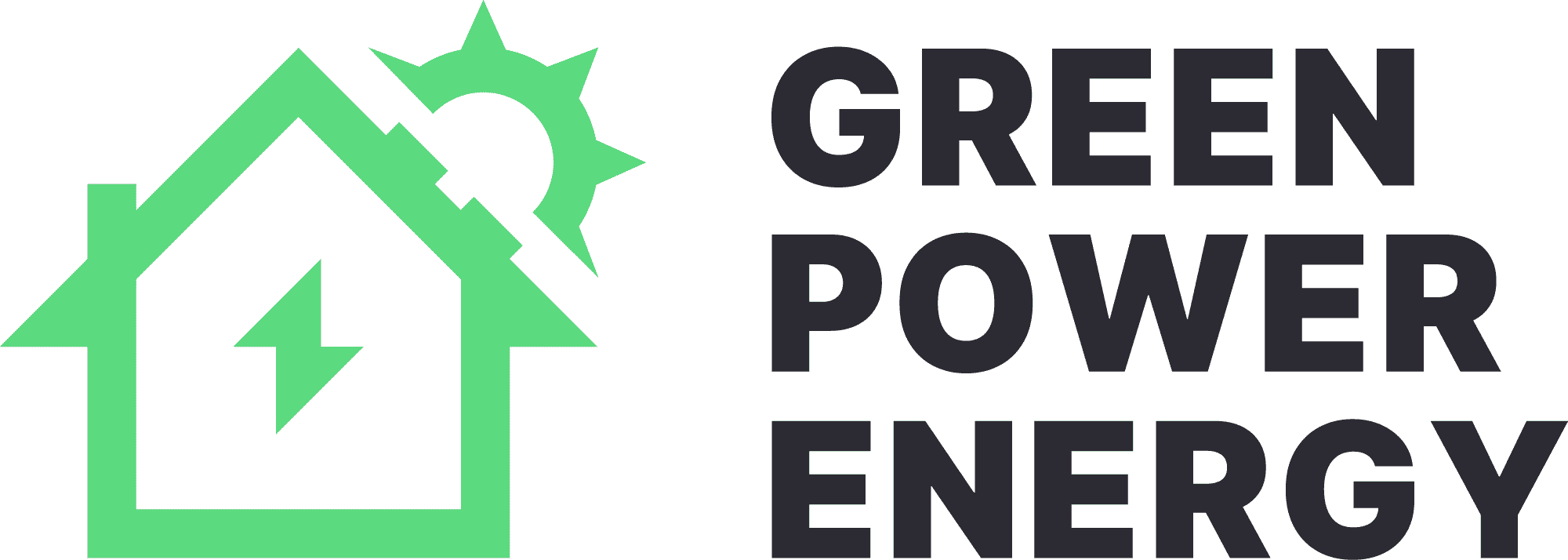
Regional Service
Average cost
Pros
- Educational, no-pressure sales approach
- Outstanding customer service
- Multitude of products and services
Cons
- Relatively young company
Green Power Energy is a regional company that provides local expertise, incredible customer service and high-quality solar equipment at an affordable price.
There isn’t much we can say about this provider that isn’t overwhelmingly positive. It’s a well-rounded installer with great warranty coverage, products and services.
Why We Chose Green Power Energy as the Best Regional Provider
As a smaller company than SunPower and Tesla, Green Power Energy is able to focus more on individualized care and customer service. This is a big reason why the company maintains an unprecedented 4.9-star rating with the BBB (Better Business Bureau) and a 4.8-star rating on Google Reviews. It’s clear from the reviews that we read through that the company provides outstanding service at every step of the way.
Green Power Energy has a nice array of panel brands and services to offer, which means Rhode Islanders with different needs and priorities will likely be able to find a system that suits them perfectly.
The installer not only offers outstanding customer service and variety, but it also has great warranty coverage, including 25 years of protection for the panels, efficiency and labor. This is ideal in a high-risk area like Rhode Island.
What We Don’t Like
Most of what we have to say about Green Power Energy is positive, as the company clearly cares about its customers and does its best to provide great service and high-quality, high-performance products.
The only potential downside is that it doesn’t accept PPAs. We don’t recommend these anyway, and the provider does offer low-cost leases, so this is more or less a non-issue anyway, and the company remains super accessible.
Solar Products
Green Power Energy works with a bunch of solar panel brands, including QCells, Panasonic, Silfab, Solaria and REC. These provide a nice range of prices and efficiency ratings, so they should appeal to most customers.
We recommend the REC or Panasonic panels for their efficiency ratings if you want the best chance of eliminating your electric bills. The Solaria panels will have the lowest per-watt cost of the available options.
In addition to panels, you can get access to the following products and services through Green Power Energy:
- Generac PWRCell solar batteries
- Enphase IQ batteries
- Tesla Powerwalls
- EV chargers — no specific brands are mentioned, but this is a great option, given the increase in popularity of EVs in the area
- The Tesla and Enphase solar monitoring apps
Financing Options
Green Power Energy accepts cash purchases, loans and leases.
If you can make a cash purchase work, that option will leave you with the most savings over time. A loan will save a little less and take a bit longer to pay off because of the interest, but it’s still a good option that lets you take advantage of the federal credit.
Leases don’t let you take the tax credit and save much less over time than the other options, but most customers will qualify for one. As such, it helps make clean energy more accessible through Green Power Energy.
Warranty Information
Green Power Energy offers robust warranty coverage that is ideal in Rhode Island. It includes a 25-year warranty for the equipment, which is average, a 25-year power production guarantee, which is a little above average, and a 25-year labor warranty, which is 2.5x the industry average.
Facts and Figures: Green Power Energy
| EcoWatch Rating |
|---|
| Better Business Bureau (BBB) Rating |
| Average Cost ($-$$$$$) |
| Solar Services |
| 4.5 |
| A+ |
| $$$ |
| Solar Panels, Solar Batteries, Solar Roof Shingles, EV Chargers |

Summit Energy

Regional Service
Average cost
Pros
- Great warranty coverage
- NABCEP-certified technicians
- Many financing options
Cons
- Relatively young company
Summit Energy excels above the competition in many areas but especially when it comes to the hands-on customer service it provides to all of its customers.
The company doesn’t accept leases and is relatively young, but aside from this minor drawback, it’s one of the best solar companies in Rhode Island overall.
Why We Chose Summit Energy as the Best for Customer Service
Summit Energy is a smaller regional company that focuses a ton of time and energy on putting customers first. It has a 4.32-star rating with the BBB and an impressive 4.8-star review on Google Reviews. The large majority of reviews we read through were full of customers raving about the communication and care they received.
With local experience and the resources to put toward individualized customer attention, its representatives are familiar with local solar incentives and rebates and are willing to help you file for them. This is a great way to maximize your solar savings in Rhode Island, and the smaller perks from individual cities or utility companies might be missed by larger providers.
Summit Energy also has one of the most impressive warranty packages in the state, which includes 30 years of coverage for the equipment, the efficiency and the labor. This is outstanding to have in an area of high risk.
What We Don’t Like
Summit Energy has been around for quite some time, but it only entered the solar industry in 2016. We try not to promote companies with fewer than ten years of experience, as they’re more likely to go out of business, void your warranties and provide below-average customer service. However, in that short time, Summit has established an outstanding reputation for itself, so we still feel confident recommending its services.
Additionally, Summit doesn’t accept solar leases. It does have low-cost options for going solar, but leases would provide slightly more benefit than PPAs, so we’d prefer to see those.
Solar Products
Summit Energy installs a few tier-one panel brands, including REC, Solaria, QCells, Panasonic and SolarEdge. This is a great combination of brands and provides something for everyone.
The REC and Panasonic panels offer high efficiency ratings that will help push up your production and solar savings over time. The Solaria and SolarEdge panels are better suited for those looking to keep installation costs down at the expense of some performance.
Below are some additional products and services you can get access to via Summit Energy:
- Generac solar batteries
- Tesla Powerwalls
- Sonnen solar batteries
- Sunnova solar batteries
- Tesla and Sonnen solar monitoring apps
- Roof replacement and repair
Financing Options
Summit Energy accepts cash purchases, solar loans and PPAs. This is an uncommon combination, as leases and PPAs usually go hand-in-hand, but no leases are available.
We would recommend going with a cash purchase or loan if you can, as these lead to the highest savings and let you take the federal solar tax credit, an average potential value of over $5,000 in Rhode Island.
A PPA is a good low-cost option if you want to save a little on your electric bills but mostly just want to support the renewable energy movement and reduce your carbon footprint.
Warranty Information
Summit Solar has stellar warranty coverage that will provide the peace of mind you need in an area prone to extreme weather like Rhode Island. The coverage lasts for 30 years and protects your equipment, ensures a minimum level of solar energy production and ensures the workmanship is solid.
The workmanship warranty, in particular, is excellent. It’s 3x the industry average and should ensure you don’t run into any problems with how your panels are installed or how they fare in the frequent extreme weather.
Facts and Figures: Summit Energy
| EcoWatch Rating |
|---|
| Better Business Bureau (BBB) Rating |
| Average Cost ($-$$$$$) |
| Solar Services |
| 4.5 |
| A+ |
| $$$ |
| Solar Panels, Solar Batteries, Energy-Efficiency Upgrades, Community Solar |

Trinity Solar

Regional Service
Average cost
Pros
- Many financing options
- Family-owned and -operated
- Makes charitable contributions
- Relatively short workmanship warranty
Cons
- Limited service area
Trinity Solar has been serving Rhode Island since 1994, making it one of the solar installers in the area with the most longevity. It has tons of local experience to ensure a reliable installation.
The company’s five-year workmanship warranty isn’t ideal in a high-risk area like Rhode Island, but its experience should help prevent issues.
Why We Chose Trinity Solar as the Most Experienced Regional Provider
Trinity Solar has nearly 30 years of experience working in Rhode Island and other parts of New England. With almost three decades of experience under its belt, you can bet that its technicians understand the local needs of Rhode Islanders and can provide systems that deliver the performance and savings you’re expecting.
Trinity Solar is a large regional company, but it still puts a lot of effort into customer service and cares for its community. Most customers are pleased with the communication and overall service they receive. The company also makes charitable donations for each home assessment ($100 each) and each installation ($1,000 each). Few companies are as committed to bettering the communities they serve.
Trinity Solar’s commitment to customer service also means that its technicians and salespeople are locally trained, so they can and will help you file for local incentives and solar rebates that larger companies might miss.
What We Don’t Like
The only real downside to working with Trinity is that the workmanship warranty only lasts for five years. This is half the industry average, and it’s about a third of the minimum coverage we’d ideally like to see in Rhode Island, where the risk of issues is above average.
We will say that we feel Trinity’s decades of experience in the industry should help mitigate that risk, but we’d still prefer that the company offer a formal warranty to ensure a safe and professional installation.
Read our full Trinity Solar review for more information.
Solar Products
Trinity Solar has an exclusive relationship with Hanwha QCells, so you can only get access to QCells panels. This is a tier-one brand and one of the best solar panel brands for use on homes, but we still prefer companies that offer multiple options to appeal to different needs.
QCells panels do have a lower failure rate than most, thanks to the rigorous testing they go through. This makes them a great candidate for standing up to the extreme weather in RI. They also have above-average efficiency ratings, making them suitable for maximizing your energy savings.
Below is a list of other products and services Trinity Solar offers:
- Tesla Powerwalls
- Generac solar batteries
- The Tesla and Enphase solar monitoring apps
Financing Options
Trinity Solar accepts all four of the primary payment options for its equipment and services. We suggest a cash purchase or a solar loan over a lease or a PPA, as they deliver greater savings, panel ownership and access to the federal credit.
Still, we love to see low-cost options like leases and PPAs from installers, as they help make clean energy as widely accessible as possible. These are especially helpful in areas like Rhode Island, where the per-watt cost for panels is well above the industry average.
Warranty Information
Trinity Solar couples its high-quality systems and service with a 25-year warranty that covers the equipment and efficiency. The equipment coverage is typical, but the production guarantee lasts for about five years longer than most companies’ warranties.
Unfortunately, Trinity only offers a five-year labor warranty, which is half the industry average. We really like to see significantly longer workmanship coverage to protect customers from the harsh weather that frequents Rhode Island.
Facts and Figures: Trinity Solar
| EcoWatch Rating |
|---|
| Better Business Bureau (BBB) Rating |
| Average Cost ($-$$$$$) |
| Solar Services |
| 4 |
| A+ |
| $$$ |
| Solar Panels, Solar Batteries, Energy-Efficiency Upgrades |

Sol Power

Local Service
Average cost
Pros
- Excellent reputation
- Representatives are experts on local policies
- Locally owned and operated
Cons
- Slightly limited service offerings
- No leases or PPAs
Sol Power is a local installer based in Charlestown, RI. It brings local experience and expertise to the table, as well as excellent one-on-one customer service.
We do wish the company’s labor warranty was longer, and the financing options leave something to be desired. Still, this is a great local company to pick.
Why We Chose Sol Power as the Best Local Installer
As one of the best local solar installers that operates solely in Rhode Island, Sol Power has hyper-local experience that most larger companies don’t. It’s able to provide constant communication to customers throughout the entire installation process, and it is knowledgeable about local incentives and rebates that could end up saving you money on your system.
Sol Power has also developed a great working environment by making the company a cooperative. That means that profits are split among employees, so by choosing the provider, you’re doing a great service for its employees and supporting a company that stands for more than just a bottom line.
Sol Power sources electrical contracting materials and some products from local manufacturers, so it has an overall positive effect on the communities it serves, as well.
Lastly, Sol Power carries a nice range of panel brands to appeal to customers with different needs.
What We Don’t Like
One drawback to choosing Sol Power is that you’ll only get access to panels and solar batteries. We prefer installers that offer a wider range of services, as this helps them appeal to more customers that are looking to get the most value out of their systems. Even just adding EV chargers, which are growing in popularity in Rhode Island, would be a welcome addition.
We also wish that Sol Power had a longer labor warranty, even though the coverage that is offered lasts for ten years, which is the industry average. Longer protection plans are preferred in Rhode Island because of the risk of damage to your solar panels from extreme weather.
Solar Products
Sol Power installs panels made by Silfab, Solaria and SolarEdge. This is a decent selection, as the Solaria and SolarEdge panels are likely to appeal to customers looking for the most affordable systems, and the Silfab panels have a high efficiency rating that is better for homeowners who want to maximize power output and energy savings.
We recommend the Silfab panels overall for their performance unless you don’t mind sacrificing performance in favor of a more affordable installation price.
There are some additional products and services you can get access to through Sol Power, which we’ll list below:
- Enphase solar batteries
- The Enphase solar monitoring app
- Off-grid solar
- Ground-mount solar
Financing Options
Sol Power only entertains cash purchases and solar loans for its systems and services. These are the only options we suggest, but they aren’t as low-cost as leases or PPAs, so some variety would also be preferred.
Of the two options, we suggest a cash purchase. By paying in cash as opposed to with a loan, you’ll see a shorter payback period by around four years and save approximately $5,000 more over the lifespan of your system, thanks to no interest being required.
Warranty Information
Sol Power offers a 25-year warranty for the panels and the panel efficiency. The former is typical from installers in Rhode Island, but the efficiency warranty is a little better than the 20 years you’d get from most other providers.
You also get a ten-year workmanship warranty, which is average. However, as mentioned previously, we’d much rather see an above-average labor warranty in a high-risk area like Rhode Island to keep your system adequately protected in the extreme weather.
Facts and Figures: Sol Power
| EcoWatch Rating |
|---|
| Better Business Bureau (BBB) Rating |
| Average Cost ($-$$$$$) |
| Solar Services |
| 4 |
| A+ |
| $$$ |
| Solar Panels, Solar Batteries |
NuWatt Energy

Average cost
Pros
- Great variety of services
- Solid warranty coverage
- Huge selection of panel brands
Cons
- Spotty customer service
- No leases or PPAs
NuWatt Energy is a regional installer that provides a sizable array of products and services, including uncommon add-on products for full system customization.
The company has some issues with providing good customer service, but overall, we think this is a solid choice if you want to custom-create your system for maximum value.
Why We Chose NuWatt Energy as the Best for System Customization
NuWatt Energy provides access to more products than most competitors, so it’s a great company to choose if you know you want a truly customized solar array or even want to add other energy efficiency upgrades to your home.
Most solar companies install panels and batteries, and EV chargers are a common add-on to see as well. NuWatt tackles all of these standard options, plus heating and AC through ductless mini-splits, solar noise barriers and even agrivoltaics, a budding technology that uses solar to provide power for AI-driven farming technology. In addition to its many services, NuWatt carries an impressive range of product brands.
NuWatt Energy includes a robust warranty package with all of its systems, which covers the equipment, the panel production and the workmanship for 25 years. This is exactly the kind of peace of mind you want in a high-risk area like Rhode Island.
What We Don’t Like
One very minor drawback to NuWatt is that it doesn’t accept leases. However, it does still offer PPAs, so there is a low-cost option available. Of the two, we’d sooner recommend a lease, but having access to PPAs makes this a minimal downside.
A more serious issue is the company’s spotty customer service. Of the providers on our list, NuWatt has the least impressive customer reviews. We still believe you’re likely to get good service and professionalism, but based on reviews, there’s a chance your experience won’t be as good as it could be with other companies.
Solar Products
NuWatt works with a bunch of different panel brands, which is just another way the company goes above and beyond when it comes to system customization. Those brands include SolarEdge, Solectria, Panasonic, Solaria, Silfab, QCells and REC. A good portion of what we believe are the best solar panels for homes are represented here.
We’d recommend the REC or Panasonic panels for maximum energy production or the SolarEdge panels for good quality and a low upfront cost.
Below are the other products and services you can get access to through NuWatt Energy:
- Solar batteries — specific battery brands aren’t mentioned
- Solar roofing
- Ductless mini-splits
- Solar noise barriers
- Agrivoltaics
- Commercial solar projects
Financing Options
NuWatt accepts cash purchases, solar loans and PPAs. Of these three options, a cash purchase is, by far, the most beneficial. It will save you the most overall — an average of around $34,500 after paying for itself — and will have the fastest payback period. A solar loan will save around $29,000, on average, with the interest cutting into savings a bit.
We don’t recommend a PPA unless it’s the only option you can afford. This financing option doesn’t let you take the federal credit, and it won’t boost your home value the same way the other options will.
Warranty Information
NuWatt Energy’s warranty coverage lasts for a full 25 years, which is outstanding. The coverage includes your physical equipment, the panel production and the workmanship. The production and labor warranties are both better than you’d get from most other companies.
In our opinion, the workmanship warranty is the best of the bunch here and will provide peace of mind even through Rhode Island’s severe weather.
Facts and Figures: NuWatt Energy
| EcoWatch Rating |
|---|
| Better Business Bureau (BBB) Rating |
| Year Founded |
| Average Cost ($-$$$$$) |
| Solar Services |
| Brands of Solar Equipment Offered |
| Warranty Coverage |
| 4 |
| A- |
| 2008 |
| $$$ |
| Solar panels, Solar battery and EV charger installations, Commercial solar |
| SolarEdge, Solectria, Panasonic, Solaria, Silfab, QCells, REC |
| 25 years for equipment, efficiency and workmanship |
Watch Below: Learn What To Know Before Going Solar in Rhode Island
How to Save Money When Hiring a Solar Company in Rhode Island
Taking the time to compare quotes, ask questions and find local solar incentives are the best ways to lower your solar conversion costs in Rhode Island. We also recommend paying for your solar panels in cash when possible. Below are some tips on how to save money when looking for a solar company in Rhode Island.
Find Local and Federal Incentives and Rebates
Rhode Island has progressive state policies and plenty of local rebates that you can take advantage of. As a homeowner, you’re also eligible for the 30% federal solar tax credit. We’ve listed the top solar incentives in Rhode Island below, but you can also talk with your solar contractor about how to apply and qualify for each.
| Rhode Island Solar Incentive | Description |
| Federal Solar Tax Credit (ITC) | The federal solar investment tax credit, or ITC, allows homeowners to claim 30% of their system costs as a credit against the federal taxes they owe. The credit has been extended through 2034 under the Inflation Reduction Act of 2022. However, the credit will decrease to 26% in 2033 and 22% in 2034 before it expires in 2035. |
| Net Energy Metering (NEM) | Through net metering programs, any extra energy your solar energy system produces is sent to the grid in exchange for utility company credits that you can use toward your next month’s bill. |
| Rhode Island Renewable Energy Growth Program | This is a program similar to net metering, but the payout is higher in most cases. National Grid’s Renewable Energy Growth (REG) program awards customers between 27 and 31 cents for each kilowatt-hour (kWh) their solar power system produces for the first 15 years. |
| Rhode Island Renewable Energy Fund (REF) | REF provides grants for renewable energy projects that have the potential to produce electricity in a cleaner, more sustainable manner. Grants are available on a first-come, first-served basis and applications are due by March every year. You can check the website for availability. |
| Residential Solar Energy Property Tax Exemption | Rhode Island has a 100% property tax exemption for eligible renewable energy projects. |
| Renewable Energy Products Sales and Use Tax Exemption | Rhode Island has a 100% sales tax exemption for eligible renewable energy projects. |
Get Multiple Quotes From Different Solar Companies
It may be tempting to go with the first quote you get from a solar installer, but taking the time to get multiple quotes can save you money.
We recommend comparing quotes and services from at least companies and weighing the pros and cons of each before you decide which to hire.
Just because a quote is the cheapest doesn’t necessarily mean it’s the best deal. Research the best residential solar panel brands and consider your home’s energy needs. Make sure to ask each solar contractor about the efficiency and type of panels they install, and what size system would be best for your home.
Pay in Cash or Put More Money Down
Considering solar panels cost thousands of dollars, we know it isn’t reasonable to expect every homeowner to pay in cash. If paying for your entire system upfront doesn’t seem feasible, don’t let that deter you from getting solar panels.
Although taking out a solar loan will mean you’re paying more overall in interest payments, in most cases, you’ll still be saving more in electricity bills in the long run.
To minimize the amount of interest you’re paying on your loan, try to pay a little more each month or put more money down upfront. Every bit counts.
Will Solar Increase Your Home Value in Rhode Island?
According to Zillow, a home with solar panels is worth 4.1% more on average than a home without solar panels. The average home value in Rhode Island is $435,415, so that’s a potential of $17,852 added value just by going solar.3
Rhode Island also has a property tax exemption on solar panels, so you won’t have to pay property taxes on any added value to your house after installing solar power.
Should Rhode Island Residents Hire a Professional Solar Installer Or DIY?
If you’re hoping to only power small appliances, an RV or a boat with solar panels, a DIY solar installation may be doable. But if you’re looking to install solar panels to power your entire home, we highly recommend hiring a professional.
In general, labor costs make up about 10% of the total cost of a solar installation. Based on the average cost of a solar panel system in Rhode Island, you would save about $2,208 on installation costs if you DIY. While DIY installation may seem like a better deal, there are risks involved. Trying to install solar panels yourself can be dangerous, and incorrectly installing your panels could cause damage to both your equipment and roof.
If you want to install a solar panel system in Rhode Island, you will need to apply for a solar permit through the Office of Energy Resources (EOR). This applies to all municipalities in Rhode Island.4 If you choose to install your panels yourself, you will have to apply for this permit independently.
You should only install a full-sized solar array on your home if:
- You have prior electrical or solar installation experience,
- You feel comfortable working on your roof,
- You have all the necessary equipment, and
- You have acquired the necessary permits to legally install your solar system.
If any one of these four statements does not apply to you, we urge you to get in contact with a professional to help you with your installation. Select one of our top-recommended solar providers below to get a free quote.
What Should Rhode Island Residents Look For in a Solar Installer?
There are over 10 solar panel installation companies located in Rhode Island, according to the Solar Energy Industries Association (SEIA).5 With multiple options available, selecting the right installer can feel overwhelming. When choosing a solar panel company, lay out your criteria and look for a contractor that offers what you want. At the bare minimum, a company should:
- Hold all required licenses and certifications to install solar in Rhode Island
- Have great customer service
- Operate locally in Rhode Island
- Offer the products and services you want
Required Licenses and Certifications
Rhode Island has strict requirements for solar professionals to qualify as certified installers. Ask your contractor if they:
- Are registered with the Rhode Island Secretary of State
- Hold a General Contractor’s license
- Have an up-to-date Renewable Energy Professional Certificate
If they do not have all three of these qualifications, keep looking for a different installer.6
Great Customer Service
A company’s quality of customer service is one of the most important factors to consider when choosing a solar provider. When choosing the right solar company, Rhode Island homeowners should look for:
- A solar installer that will communicate with you throughout (and after) the installation process
- A solar company that offers a great warranty and will back it up
- A solar provider that hires knowledgeable, experienced solar professionals
But how do you know which companies offer the best service, and which ones fall short? A little research can go a long way. Read customer reviews on reputable websites like BBB or Trustpilot. This gives you insight into the experiences of real customers in Rhode Island and how satisfied they were with their installation.
Or, if you want to skip the hassle, we’ve already researched the best solar companies in Rhode Island for you. Check out one of our trusted solar providers below to get a free, no-obligation quote.
Operates Locally
When it comes to the location of your solar company, you have two options:
- A large solar company that operates nationwide and has a location in Rhode Island, or
- A small solar company that operates only in Rhode Island.
We do not usually recommend hiring a solar company that is based outside of the state you live in (although some companies close to the Rhode Island border are an exception).
Whether you go with a national or local solar company is up to you. A large company tends to offer a wider selection of products at a slightly lower price, but small companies tend to have more customization options and better customer service.
Offers the Products and Services You Want
There’s an endless array of solar products, panels, batteries, brands and sizes out there. When choosing a solar provider, you should find a company that meets what you want and need for your Rhode Island home.
You may not know exactly what solar products you want before you get started, but you should always consider your home’s energy needs.
For instance, the size, angle and orientation of your roof, as well as your average energy usage, will determine what solar brand and type are just right for you.
Solar installations are highly individualized to meet each home’s needs. Don’t let a company convince you otherwise.
If you’re interested in add-ons like solar batteries or newer products like solar shingles, make sure your company of choice offers everything you want. Some solar companies only offer solar panels, while others offer a wider range of products.
The cost information presented in this article is derived from a comprehensive analysis, incorporating data from multiple industry sources. The average cost per watt per state was calculated based on figures from Consumer Affairs, Energy Sage, and Berkeley Lab’s Electricity Markets & Policy Department. Additionally, monthly energy consumption and the average monthly cost of electricity were sourced from the U.S. Energy Information Administration, ensuring a well-rounded and accurate representation of the information presented.
Methodology: How We Reviewed the Best Solar Companies in Rhode Island
There are only 11 local solar installers in Rhode Island, according to the Solar Energy Industries Association (SEIA), plus national companies that operate within the state as well. Although there are fewer providers than most other states have access to, we still took our time to research each one and rank them based on what we feel is most important to providing you with a good experience. Below are the top six factors we look at when assessing the best solar companies in Rhode Island:
- Local reputation and reviews (20%): We always look first at a company’s reputation, often by reading through dozens of customer reviews. We look for things the installer is doing correctly, like providing good customer service and professionalism, responding to warranty claims and maintaining a line of communication throughout the process. Companies with higher customer reviews generally rank higher, as they are more likely to meet and exceed your expectations.
- Pricing and financing (20%): The per-watt price for photovoltaic (PV) equipment in Rhode Island is around $3.68, which is well above the national average of $3.33. Since higher per-watt prices make solar equipment more expensive and less accessible, we look for companies that combat this by keeping prices low and offering multiple financing options.
- Services offered (20%): Lots of Rhode Islanders look for ways to customize their systems, like adding solar batteries to overcome the net metering credit cap, adding EV chargers as EVs increase in popularity and more. Companies that have robust service offerings rank higher than those just installing panels and batteries. Those that also offer energy efficiency upgrades get ranked higher as well, as the high cost of electricity in the state leads many customers to consider these home improvements.
- Warranty coverage (20%): Rhode Island sees quite a lot of extreme weather, from annual rainfall that’s around 1.5x higher than the national average to hurricanes and tropical storms that put rooftop panels at an increased risk of damage. Installers that provide lengthy warranty coverage for your panels, their efficiency and labor not only provide peace of mind that your system will endure through the weather but will also continue to produce sufficient energy to provide substantial savings over time.
- Company experience (10%): With solar gaining popularity and equipment prices dropping in Rhode Island, more and more companies are popping up to keep up with demand. With a relatively untapped market comes less reputable companies looking to capitalize. We prefer to recommend companies with at least ten years of experience, as this helps ensure your installation is done properly and by experienced technicians. Companies with longevity are also more likely to stick around, which means they can continue honoring your warranty coverage.
- Brand quality (10%): Finally, we look at the brands of equipment installed by each company. We love to see multiple brands that appeal to customers of all backgrounds, including those looking for maximum efficiency and those instead looking to keep installation prices at a minimum.
Read More About Going Solar in Rhode Island
FAQ: Best Solar Companies in Rhode Island
Consumers trust the EcoWatch brand when it comes to solar, so we get a lot of questions about the best solar companies. Here are a few of the most frequently asked questions we’ve received from Rhode Island homeowners, along with our responses. If you have specific questions that aren’t answered here, reach out to our team of solar experts at solar@ecowatch.com.
Yes, the type of solar panel you select can greatly affect your solar panel system. Photovoltaic (PV) panels may all look similar, but they vary greatly in durability, efficiency and price. We recommend doing some reading on the best solar panels to find the ones that fit your needs, then you can narrow down which of the five solar installers we’ve listed on this page is best based on if they carry your desired solar panel brand.
Most Rhode Island homeowners maintain that company experience and track record are most important when choosing a solar installation company. New England is a highly competitive region for solar, and most installers in the area serve all of Rhode Island, so there are many companies to choose from. You want to make sure you’re choosing a reputable solar company with a long-standing and proven track record of successful installs.
It’s hard to know exactly which company will be the most affordable for you because solar panel installation costs vary depending on the specifics of your home. But cheap is not always better when it comes to solar, especially because more expensive panels are usually more energy-efficient, which leads to more savings in the long run.
We know that installing a solar panel system is costly, which is why we recommend shopping around to get quotes from multiple solar companies in Rhode Island. When figuring out the cost of solar, don’t forget to factor in Rhode Island’s solar incentives, like the federal tax credit, state sales, and property tax exemptions, and National Grid’s Renewable Energy Growth Program (which gives you credit on your energy bill for the energy your solar panels produce).
No, not necessarily. New England clean energy companies can provide more local expertise to Rhode Island homeowners. However, you may feel more comfortable choosing a major installer like SunPower which has a strong reputation across the nation. In the end, choosing a bigger company over a local company is a personal preference and cannot be defined as “better” or “worse.”
While PV solar panels work best when they’re soaking up direct sunlight, they still work when in the presence of indirect sunlight on cloudy winter days. Solar panels are tilted so that, in most cases, snow will slide right off of them and they can still receive sunlight. Plus, electricity actually flows faster in lower temperatures, so you may see your panels work more efficiently in the winter.
Related articles
Top Solar Installers in Rhode Island Cities
Comparing authorized solar partners
-
- Most efficient panels on the market
- National coverage
- Cradle to Cradle sustainability certification
- Great warranty coverage
- Expensive
- Customer service varies by local dealer
A+Best National Provider1985SunPower Panels25-year all-inclusive warranty
Having trouble deciding? Click below and use our process to receive multiple quotes instead:

 233k
233k  41k
41k  Subscribe
Subscribe 
